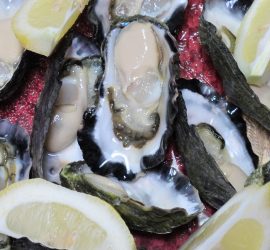Barramundi

Barramundi is the superstar of Australian seafood, excelling in all dimensions. It has sweet flavor and a consistent texture, with large moist white flakes, few bones, and high proportions of healthy omega-3 and omega-6 fatty acids. It is a very successful species both in aquaculture and in the wild. Barramundi is also known as giant sea perch or Australian seabass, and is also found throughout Southeast Asia and Papua New Guinea. It is extremely important in Thai cooking, where it is known as Pla Krapong. Barramundi is versatile and can be fried, grilled, steamed or tossed straight on to hot coals, bush-style. Barramundi is a major commercial fishing species and a fantastic sporting fish that reaches sizes of up to 130 pounds and 6 feet long. They attack baits, lures and flies, and have trophy status for recreational anglers.
Dhufish

Australians who have eaten dhufish swear that they are the best eating fish in the sea. It is their taste that makes them by far the most popular fish in the seafood-crazy state of Western Australia. Dhufish can be baked, fried, poached, steamed, grilled …. Dhufish have (sweet, delicate, thick, creamy, firm, flaking flesh ) that should not be subjected to complex recipes or flavors. Growing up to 55 pounds, and with large scales and a glowing silver, slightly purple hue, they are a close relative of the pearl perch in the family of fish known as Glaucosomatidae, but are much bigger. They occur only from Shark Bay south to Esperence, and they should not be confused with the Australian mulloway, commonly referred to as ‘jewfish’ that are very similar to white seabass and are also member of the Sciaenidae family. Jewfish are known variously as ‘grunters’, ‘drums’ or ‘croakers’ in different parts of the world.
Marron

The marron has the finest flesh of any crayfish in the world. The flesh is bright white with red tinges, sweet with a delicate texture, similar to lobster. Marron are the world’s fourth largest crayfish, attaining a weight of over 4 pounds at times. Over 40% of its flesh is in its tail, which makes it much better value pound-for-pound in relation to most crayfish such as the Australian yabbie, which has only 28% of its meat in the tail. Marron have been successfully farmed and aquaculture of the species is growing rapidly, as they are fast growing and reasonably simple to manage. They have been introduced to a number of different geographies including Kangaroo Island where they bred very successfully in the wild and are now managed as a noxious species which cannot be returned to the water if caught.

